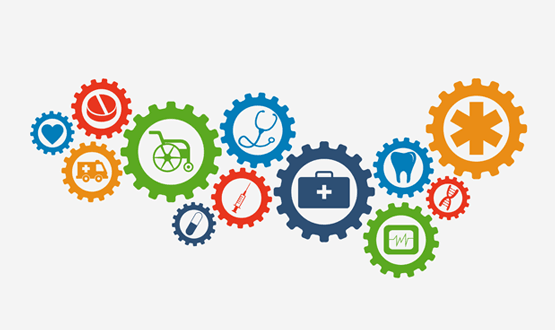In the age of the digital health revolution, providers now more than ever are being faced with the decision of whether to incorporate technology solutions to aide, scale, and compliment their market strategies for patient care. As organizations continue to adopt and integrate technology into care delivery, they must reflect on key downstream events, including data storage and accessibility, impact on operational and clinical workflows, and security of patient data.
The pillar of interoperability is the stream of workflows, patient data, and other necessary information through software and data integrations. Interoperability supports the exchange of information across platforms supporting organizational initiatives and centralizing information to promote easy access to health information for both patients and providers.
Standardizing Care & Access to Information
Within the healthcare ecosystem, interoperability is a step forward in standardizing care across the continuum, providing access to the right information at the right time, irrespective of the patient’s care setting within the broader delivery network. To address and treat the needs of each patient, this timely access to information introduces efficiencies into the care process, ultimately improving outcomes and provider workflow.
Interoperability of the Electronic Medical Record
Health systems, home health organizations, physician groups, ACOs, and other provider organizations have embraced technological integration with varying degrees of adoption. One example is the integration of electronic health records (EHR) and electronic medical records (EMR) into telehealth or remote patient monitoring (RPM) technologies. From a clinical perspective, this integration is essential. At a high level, integrations between the EMR-RPM vendor can involve the exchange of biometric data, patient demographics, and care plan information.
The true value is ultimately unlocked when the agile iteration processes of organizations to the wealth of health care data is combined. This unlocks the potential to develop patient cohorts, risk stratify across patient populations, and utilize AI/ML algorithms to identify the most at-risk patient populations to then provide extra attentive care.
Benefits of EMR/EHR Interoperability Explained
The realm of utilization is endless, but with such breadth, it is the social and lawful obligations of organizations to treat this access to data with care, anonymity, and attention to security. This exchange of information allows organizations to maximize their staffing resources, quality of care delivered to their patient population, and in the case of many EHRs, directly bill through a centrally located platform – introducing financial incentives. In line with that sentiment, reimbursement is closely tied to clinical outcomes such as hospital readmissions and emergency department visits.
While new technology can make teams more efficient long-term, leaders of organizations are often initially met with apprehension from staff. For clinical staff, having to learn another platform to deliver patient care can result in frustration. During the learning period, double documentation, operating between different platforms (cloud-based or local), and learning a new technology can seem daunting.
However, integration of these technologies into an organization’s key platforms removes the apprehension and need to operate out of multiple systems. The secure and seamless transmission of data bi-directionally allows staff to operate out of their native platform while still receiving all the benefits of the new technology.

Image Source: Exscribe, 2018
Interoperability into the Future
The future of interoperability revolves around the standardization of data inputs and the many insights that can be drawn from each of those components. As the industry sits at the fence of the current HL7 standard, inching towards FHIR adoption, the impact that the crossflow of data can have has the potential to be monumental. As an organization, HRS continues to strive towards establishing a standard where decision making and patient insights are easily extracted through the pool of data, empowering organizations with the most relevant and up-to-date information, driving clinical decision making. Centralizing this information across the healthcare ecosystem is yet another step we’re taking into modernizing and digitizing how care is administered. With a wealth of information to extract from, the future of healthcare, powered by data insights, is bright.
HRS, Interoperability, and EMRs
Health Recovery Solutions supports integrations with over 60% of our customer’s Electronic Medical Records. Some of the best performing HRS organizations have been able to manage a caseload of 1 FTE to 140 patients as a result of both program and EMR efficiencies. With the ability to largely operate out of a single portal, whether it be in HRS or within their native EMR, HRS allows for the parallel flow of information into our system and an organization’s EMR. Our customers can optimize their clinical workflows to more effectively triage and deliver the highest quality of care for their patients.
This is just scratching the surface of what cross-platform interoperability provides. Data exchange, whether it be from software-to-software or diving into hardware platforms such as wearable devices, interoperability is facilitating the future of healthcare innovation. Supporting care coordination, disease management, and overall wellness, healthcare organizations will have access to insights of data that today may be disparate. When correctly joined, these platforms can present a holistic view of a population’s profile.